The US Is Backing Revolution In Venezuela, And Now Venezuelan Military Officers Are Asking Trump For Weapons To Fight The Maduro Regime
By Theodore Shoebat & Walid Shoebat
Venezuela is in chaos and caught within the violent labyrinth of corrupt government and the torrent of geopolitical bloodlust from outside powers. While poverty is entrenched in the society thanks to corruption and nefarious dealings, Venezuelan military defectors have recently called for the US to send arms to rebels to fight against the government, essentially asking for the same thing for Venezuela what the US brought unto Syria. Carlos Guillen Martinez, one defecting soldier, told CNN: “As Venezuelan soldiers, we are making a request to the US to support us, in logistical terms, with communication, with weapons, so we can realize Venezuelan freedom”.
Venezuela has been suffering from hyperinflation, which was an estimated 80,000% by 2018 and 380,000% by 2019, and low and negative economic growth. Venezuela has also been going through huge decline in its oil exporting. For example, in 2018 the United States’ importing of Venezuelan crude oil had reached its lowest since 1993, falling from 840,000 barrels per day in December 2015 to roughly 480,000 barrels per day in March 2018. The country has also been enduring through food scarcity.
Hugo Chavez failed to stop major government corruption and veer Venezuela away from dependence on oil exports. Also, with the tremendous revenues coming in from oil imports, the government began to spend huge amounts of money on social welfare (in 2011 $49 billion and in 2014 $57 billion in oil revenue went to social spending). Once these revenues declined heavily, as Gabriel Hetland writes, “state spending on social services, and just about everything, would have to decline.” Also, with the government’s lack of reinvesting its revenues in its own oil company, Petróleos de Venezuela (PDVSA), oil production has also declined, thereby weakening Venezuela’s strongest export business. As Hetland points out: “the main factor behind the current drop in production is a failure to pay oil-services companies”
There is also another huge factor behind Venezuela’s economic woes and that is the black market that is greatly entrenched within the society and government. One US dollar in Venezuela equals an exorbitant amount of bolivars. Government and military officials, as well as businesses, have taken US dollars (provided by the government at a lower official rate) and traded these dollars in the black market for a huge profit of bolivars. This diverging of dollars away from imports and into illegal black-market trading has led to severe scarcities as well as the marked drop in imports. The lack of access to American dollars for legitimate businesses has contributed to a huge decline in production.
The economic problems in Venezuela are indeed severe, and they are consequences of the government’s actions. However, the state has not acted on its own, but in a hostile environment, backed by international forces. The opposition, backed with tens of millions of dollars funneled in by the United States government, is not just a bunch of innocent people just wanting freedom. In February of 2014, there was a wave of political violence that left 43 people dead. Half of those deaths were a result of actions done by the opposition.
The United States has labeled Venezuela as an “unusual and extraordinary threat” to American national security and has called for investors and bankers to avoid involvement with the Maduro government. Washington has, by this, prevented much-needed foreign financing and investment. So much for being a serious threat. One can see how fragile Venezuela is by seeing how it was paralyzed by a calculatively done coup and oil strike.
In late 2002 and early 2003 there was a major strike on oil which led to the Venezuelan government to impose currency controls in order to keep the bolivar within the country. The oil strike was led by opposition movements against the Hugo Chavez regime. The origins of the strike can be traced back to a failed coup that was attempted in April of 2002, which was led by General Enrique Medina Gomez, who was actually Venezuela’s military attaché in Washington.
The story goes that there was a peaceful demonstration against Chavez and pro-government militants, supposedly on the orders of Chavez, opened fire on the protestors on the Llaguna Bridge, killing 10 and injuring 100 people (now known as the Llaguno massacre). Military officers refused to open fire on the anti-Chavez protestors. Chavez then resigned from office.
But this is the story that the US government wanted everyone to believe (kind of like how they wanted us to believe that Assad gassed kids to death).
While the American government issued its own version of the story, that the Chavez regime just opened fire on peaceful protestors, there was later evidence showing that gun fire was coming from both pro-Chavez and anti-Chavez gunmen firing on each other. As the New York Times reported:
“The evidence suggests that multiple gunmen – uniformed and civilian, pro- and anti-Chavez – fired weapons in the midst of the largest antigovernment demonstration in Mr. Chavez’s turbulent three years in office.
The violence led to Mr. Chávez’s temporary downfall when military officers, blaming the government for the deaths, publicly withdrew their support for the president.
It is unclear who actually aimed and fired into the crowds on the afternoon of April 11. But interviews with investigators, police officers and witnesses suggest that a gunfight took place across three blocks of Avenida Baralt, south of the Carmelitas Bridge, which was teeming with unarmed protesters.
At the same time, unidentified gunmen with rifles fired down from at least three tall buildings, hitting most victims in the head and upper body.”
This contradicts what Ari Fleischer, then the press secretary under Bush, said:
“According to the best information available, the Chávez government suppressed peaceful demonstrations. Government supporters, on orders from the Chávez government, fired on unarmed, peaceful protesters, resulting in 10 killed and 100 wounded.”
How could the story be recounted as just the government making an order to just outright murder peaceful demonstrators when there is evidence that indicates a gunfight between two factions? After the shootout, a dissenting army head, Efrain Vasquez Velasco, in the company of other high-ranking officers, made a television appearance in which he declared his “solidarity with the people of Venezuela”, condemned the government and said: “the violation of human rights and the deaths of today cannot be tolerated.”
Later on one of the plotters, Colonel Julio Rodriguez Salas, went on television and revealed to an opposition journalist named Ibeyise Pacheco that the plan for a coup began nine months prior to the event. “Nine months ago a movement started to organize itself more firmly,” said Salas, “a serious movement, and fortunately it has come to fruition today.” A Venezuelan general named Luis Garcia Carneiro, who was taken prisoner by the rebels, recounted of how he was told by his captors that their plan was made years before the coup. “They told me this was planned from years back, because it was the one way there would be fewer deaths.” Carneiro also recounted that the massacre on the Llaguna Bridge was done by the opposition who, he said, set up snipers to fire on the crowd and cause confusion:
“They had even planned some deaths as actually occurred. They had the snipers in the sector where they [the plotters] never passed. They wanted to kill people on both sides to create confusion. …. That is where I convinced myself that, in fact, everything was well organized and that they had planned a massacre on the Llaguna Bridge to justify the participation of the armed forces against the president.”
The situation is eerily familiar to stories of opposition groups in other countries. During the Euromaidan demonstration in Ukraine in 2014, snipers opened fire on the opposition; in Egypt there were snipers in 2013 who fired on opposition demonstrators; in Syria, 2011, it was reported that protestors in Hama were fired upon by snipers (yet the Syrian government reported that 80 of their own security personal were wounded).
Navy vice admiral Hector Ramirez told Lucas Rincon that he had been involved in the plot for six months and that a junta would be presided over probably by a businessman. There was a documentary by John Pilger in which a CNN correspondent, Otto Neustald, mentions how on April 10th (a day before the coup) he received a phone call telling him that “on April 11, the march will go to Miraflores. The message was that there will be deaths and a — recorded footage— of twenty high ranking officials will appear speaking against the Chavez government demanding the resignation… it was all planned”.
The coup was orchestrated and planned out with US backing in conjunction with propaganda that would be spread to embolden the image of Venezuela as an “axis of evil” as John Bolton likes to label the country. As Eva Golinger wrote back in 2004:
The White House and the State Department both claimed that the Chávez government had provoked violence and actions that resulted in the President’s alleged resignation. They also asserted that the Chávez government had fired on unarmed, peaceful protesters and that the Venezuelan military and police had refused orders to “support the government’s role in human rights violations”. The U.S. Government referred to the protests and actions of that day as though they were spontaneous, unplanned events. The U.S. Government has also continued to deny to this day any involvement whatsoever in the April 2002 coup d’etat.
However, there is a vast amount of evidence that has surfaced since the coup demonstrating that the events on April 11, 2002 were entirely premeditated by a sector of the opposition intent on overthrowing the Chávez government. Furthermore, my own investigations have provided a plethora of evidence proving the U.S. involvement in the coup on various levels. Most revealing on the Venezuelan front was a news program on Saturday morning, April 12, 2002, “24 Horas” with host Napoleon Bravo. On that program, Bravo interviewed Vice-Admiral Carlos Molina Tamayo, a professed coup leader, and Victor Manuel Garcia, Director of the polling company CIFRA who claimed to have represented the “civil society” during the coup. Both Molina Tamayo and Garcia gave a jaw-dropping, detailed account of the events leading up to the coup and those key Venezuelans involved, including crediting the private televisions stations for their complicity and aide. Their testimony, along with Chacao municipal mayor Leopoldo Lopez of the Primero Justicia political party and Napoleon Bravo’s own admissions of complicity in the coup, provided plenty of proof that the overthrow of Chávez was a premeditated event.
Later, an extraordinary and award-winning documentary by filmmaker Angel Palacios, “Puente Llaguno: Claves de un Masacre”, revealed how the Venezuelan private media had manipulated and distorted the events that unfolded on April 11, 2002 in the opposition march, which resulted in widespread violence and death. The documentary also provided sufficient proof that snipers unrelated to the Chávez government had provoked the violence in the opposition march that justified the forced removal of Chávez from office. Furthermore, the documentary succeeded in proving that a well-planned military-civilian coup d’etat had taken place that day and that those involved were connected to the highest levels of the U.S. government.
One CIA document from April 6th of 2002, entitled, “Venezuela: Conditions Ripening for Coup Attempt”, reads:
“Dissident military factions, including some disgruntled senior officers and a group of radical junior officers, are stepping up efforts to organize a coup against President Chávez, possible as early as this month … The level of detail in the reported plans … targets Chávez and 10 other senior officers for arrest… To provoke military action, the plotters may try to exploit unrest stemming from opposition demonstrations slated for later this month…”
This document is from April 6th of 2002, and the coup occurred on April 11th. So the CIA knew that there was going to be a coup and was planning for it. They even knew that Chavez would get arrested and that there would be civil unrest. To quote Golinger: “the White House knew what was happening all along.” Moreover, she writes: “the CIA was involved in the coup plotting and the collaborations with dissident military factions and opposition leaders”.
For 48 hours Hugo Chavez was no longer president and the United States declared Pedro Carmona to be the new president of Venezuela. It eventually was revealed that the US government was backing the coup and that Elliot Abrams — the same man Trump made in charge of Venezuelan affairs — was involved (its fascinating how these types continue to be an influence in different administrations, aiming for the same policies).
As we read in a report from the Guardian:
The failed coup in Venezuela was closely tied to senior officials in the US government, The Observer has established. They have long histories in the ‘dirty wars’ of the 1980s, and links to death squads working in Central America at that time.
Washington’s involvement in the turbulent events that briefly removed left-wing leader Hugo Chavez from power last weekend resurrects fears about US ambitions in the hemisphere.
It also also deepens doubts about policy in the region being made by appointees to the Bush administration, all of whom owe their careers to serving in the dirty wars under President Reagan.
One of them, Elliot Abrams, who gave a nod to the attempted Venezuelan coup, has a conviction for misleading Congress over the infamous Iran-Contra affair.
The Bush administration has tried to distance itself from the coup. It immediately endorsed the new government under businessman Pedro Carmona. But the coup was sent dramatically into reverse after 48 hours.
Now officials at the Organisation of American States and other diplomatic sources, talking to The Observer, assert that the US administration was not only aware the coup was about to take place, but had sanctioned it, presuming it to be destined for success.
The visits by Venezuelans plotting a coup, including Carmona himself, began, say sources, ‘several months ago’, and continued until weeks before the putsch last weekend. The visitors were received at the White House by the man President George Bush tasked to be his key policy-maker for Latin America, Otto Reich.
Reich is a right-wing Cuban-American who, under Reagan, ran the Office for Public Diplomacy. It reported in theory to the State Department, but Reich was shown by congressional investigations to report directly to Reagan’s National Security Aide, Colonel Oliver North, in the White House.”
On April 14th, the Supreme Tribunal of Justice absolved four military officers involved in the April coup. Soon soldiers were getting involved in general strikes against the government. On October 22nd of that year, fourteen military officers who had been suspended for participating in the coup occupied Plaza Francia in Altamira, a wealthy neighborhood in Caracas, and declared it a “liberated territory”. The obstinate soldiers declared that they would not leave the plaza until Hugo Chavez resigned, and even called for other soldiers to take up arms against the state.
In December of 2002, the Coordinadora Democrática, the largest umbrella organization of opposition groups against the government, led by the Venezuelan Federation of Chambers of Commerce and Production (Fedecámaras), Venezuela’s main business union, and the trade union federation Confederación de Trabajadores de Venezuela (CTV), called for a workers strike. Its interesting that a people who are ‘starving’ are still strong enough to starve even more and do “a workers strike.”
It escalated into a serious strike, known as the the 2002–2003 oil lockout/strike. Most of the shops in eastern Caracas closed its doors, while downtown and western Caracas continued to see its shops open since most shop owners either supported Chavez or were indifferent to politics.
On December 4th of 2002, the captain of a large oil tanker, called the Pilín León, anchored in the Lake Maracaibo shipping channel and refused to move. The rest of the 13-ship fleet working for PDVSA also did the same. Managers of PDVSA also refused to work, paralyzing the oil company of the Venezuelan government. The company’s management even locked out employees, preventing them from entering facilities to work. Huge parts of the operational staff of PDVSA also refused to work, including virtually all of its marine flotilla captains.
As a result of the strike, petroleum production fell to one-third and Venezuela was forced to import oil to survive and to meet its foreign obligations (so much for being an axis of evil. Venezuela is obviously no Third Reich in regards to political strength). It became, obviously, very difficult for people to fill their tanks and many gas stations closed down. Long lines at gas stations became very common, airlines had to cancel many domestic flights, banks curbed their opening hours, and many shops were shutdown notwithstanding the Christmas shopping season. The Coordinadora Democrática came up with a slogan: “2002 without Christmas, 2003 without Chávez”. In order to boost up the image of the strike, private television networks “canceled regular advertisements and ran pro-strike, anti-Chávez spots around the clock.” Venevisión’s president openly declared solidarity with the strike. As Golinger wrote:
“no product commercials, no soap operas, no movies, no cartoons, and no sitcoms. They broadcast an average of 700 pro-opposition advertisements each day, paid for by the stations themselves and by the opposition umbrella group, Democratic Coordinator.”
A struggle between the private networks and the state-run Venezolana de Televisión ensued in a rivalry over the minds of the population. In one instance, state television said that all universities were open, while private networks affirmed that they were all closed. In 2009, the privately ran television network, Globovisión, was assessed $2.3 million in back taxes for the opposition advertisements shown during this period.
A question one must ask is, if Venezuela is such a despotism or a party of the “Axis of evil” that John Bolton says it is (its funny because Bolton said the same thing about Syria and Libya), then why would such a tyranny allow for a private network to spend so much money on propaganda calling for its overthrow?
On December 6th, a Portuguese immigrant and taxi cab driver, João de Gouveia, murdered three opposition protestors at the Plaza Francia in Altamira, a centre for opposition demonstrations. Opposition media wanted to portray Gouveia as a pro-government gunman and repeatedly aired a video purportedly showing him at a pro-Chavez rally that was also attended by Freddy Bernal, a pro-Chavez mayor. Bernal, however, rejected this as propaganda and said that Gouveia had suffered from “schizophrenia and paranoia” and had been used by the opposition. “It was a trick to create a provocation,” said Mr. Bernal, who claimed that the clip was manipulated. Meanwhile, the government claimed that Gouveia was hired by the opposition in order to create an atmosphere for a military takeover.
But there was another explanation given by a Venezuelan government official, and that was that Gouveia admitted that he was paid by a rebellious member of the armed forces and was working for the CIA, as we read from a report from the Guardian:
One senior government official has even claimed that De Gouveia has already confessed to receiving money from a dissident member of the armed forces and admitted to working for the CIA. The official said that he recognised that the allegation was like “Mission Impossible”. He said that De Gouveia confessed after being told that there had been a plan to kill him after the shootings, in the same way that Lee Harvey Oswald was killed after the assassination of President Kennedy.
This latter explanation was never proven. Regardless, the opposition used the murders and “energized and radicalized the opposition movement”. On December 9th, the opposition firmly declared that the strike would not end until Chavez would resign.
The strike terribly damaged Venezuela’s economy and because so many people couldn’t fill their tanks up with gasoline, transportation of goods were greatly impeded and food shortages became a reality. The strategy was to cripple Venezuela with food shortages and other harsh difficulties and then blame the Chavez government in order to force him to resign.
The government had to take serious measures to mitigate the dismal situation. On December 12th, Chavez fired four executives of PDVSA who were leading the strike (they were fired, not executed as they would be in a serious tyranny). These four men, in fact, were fired in April before the coup but were reinstated by Chavez after the coup.
By January of 2003, 300 executives and managers were fired. The Chavez regime had its eyes on the Pilín León tanker and decided to use the navy to force it back to work. However this plan was rescinded due to a lack of a qualified crew. But fortunately a group of retired seaman took over the ship and worked for two days to get the ship functioning again and successfully parked it. A disturbing aspect of this story is that the whole ship was boobytrapped. What made restarting the ship so difficult was that the previous crew who hijacked the tanker “had sabotaged the ship, leaving behind hard-to-notice traps in the computer system and elsewhere that could set off an explosion.”
18,000 PDVSA employees, 40% of the company’s workforce, were fired for “dereliction of duty” during the strike.
The economic damages on Venezuela as a result of the strike were severe. During the first four months of 2003, Venezuela’s GDP fell 27% and it left its oil industry with a cost of $13.3 billion.
Oil production was brought back up by promoting lower-level employees in the PDVSA who were, typically, loyal to Chavez. They also split the company by east and west Caracas, with the eastern part — being where most of the striking executives and managers were concentrated — being greatly brought down in size. Energy Minister Rafael Ramírez reported that restoring the oil company was difficult due to people trying to sabotage it, as we read in a New York Times report: “Restoring oil operations had been delayed by sabotage at most installations, he said.”
In this strike, all of the executives of the PDVSA refused to work, thousands of employees went on strike, all thirteen of the company’s tankers were hijacked, the major private television networks spent millions on spreading propaganda against the government. There is no way that all of this was coming solely from a grassroots movement. There had to have been some serious coordination and backing. And the fact that the US has funneled tens of millions of dollars to fund the opposition in Venezuela, its not that difficult to wonder who would back up such an immensely calculative operation to cripple the Venezuelan economy.
The United States has its eyes on Venezuela, just as it had its eyes on Ukraine, Egypt, Libya, Syria, and Iraq.
And these are not simply our observations alone. Alfred de Zayas, the reputable international law specialist, writes an interesting observation:
“One may ask, is the International Criminal Court credible, when it has thus far only focused on African politicians, and has failed to investigate or indict leaders of powerful countries, who have hitherto enjoyed total impunity?
In 2011 another oil rich state was devastated, Libya, with the aggression similarly preceded by systematic governmental and media disinformation. Today’s crisis in Venezuela has much in common with the prior aggressions against the two other oil-producing countries.
One would think that the human rights community is committed to advancing the civil, cultural, economic, political and social rights of all without discrimination. Their silence in the face of the enormous suffering inflicted on the Venezuelan people by the United States is nothing less than appalling. The economic war against Venezuela, carried out not only by the United States, but also by the Grupo de Lima in clear violation of Chapter 4, Article 19 of the OAS Charter, the financial blockade and the sanctions have demonstrably caused hundreds of deaths directly related to the scarcity of food and medicines resulting from the blockade.”
The US has been sanctioning Venezuela in order to bring the country further into economic instability. The United States has been doing the same thing in Iran. The strategy behind this policy is to push the people or the military (or both, really) into revolution against the government. The United States has taken inspiration from the economic problems that preceded both the French and Bolshevik revolutions. This is evinced by Rudy Giuliani when he talked about using the immense economic decline in Iran to cause revolution and bring the Islamo-Marxist MEK (the People’s Mujahideen of Iran) into power. As Giuliani told a crowd of MEK operatives:
“freedom from oppression always comes through economic want, through human want. Thats what happened in the French Revolution, thats what happened in the Russian Revolution — the original one, and the second one —, and thats whats happening right now in your [the MEK’s] homeland.”
That the US is utilizing this strategy for Venezuela was affirmed in an observation articulated by de Zayas:
“It is all too obvious that the intention of the sanctions has been to asphyxiate the Venezuelan economy in the expectation that the Venezuelan people or the Venezuelan military will topple the Maduro government.”
The US is hoping that members of the Venezuelan military, as well as government officials, will dissent against the current regime. As Robert Malley and Robert Fadel wrote for the Atlantic:
“The bet is that the members of Venezuela’s military and political elite will turn against Maduro once he no longer can provide them with the financial benefits they’ve become accustomed to.”
De Zayas also warned that in Venezuela there are at least seven million Chavistas “who are not likely to roll over after a coup d’état.” The implication is clear: a coup in Venezuela will heighten the prospects for a civil war. The ruling United Socialist Party of Venezuela (PSUV, formerly the Fifth Republic Movement (MVR)) is still very popular in Venezuela, winning twelve of fifteen major elections between 1998 and 2015. The Socialist party currently has 31 of the 167 seats of the National Assembly; 19 of the 23 governors in Venezuela belong to the party, alongside 303 of 335 mayors in the country; and it holds 503 of the 545 seats in Venezuela’s 2017 Constituent National Assembly.
The country is heavily polarized. What is concerning is that even the pro-Guaido faction is not optimistic that the situation will have a peaceful end. Venezuela is full of people still loyal to the government, and they are not going to just standby and watch their regime go down; plus, the country is flooded with firearms and has a plethora of armed groups and paramilitaries. As Robert Malley and Robert Fadel recount in their Atlantic article:
“Dig a little deeper, however, and even pro-Guaidó politicians admit they have little confidence that this will end peacefully or according to plan. They can’t imagine that Maduro, with so much to lose, will back down. They don’t trust that the military elite, which benefits so much from its control over licit and illicit businesses and which so far they have failed to reassure about its future, will defect. They wonder aloud about a possible U.S. military intervention, believing it could precipitate Maduro’s departure but also a future of violence and chaos in a country awash in weapons and replete with semiautonomous domestic and foreign armed groups. Right now, in short, they are riding high. But, they concede, that hardly means they are riding smoothly toward a denouement.”
If there is a civil war in Venezuela, there will be an ocean of weapons to use, and it would not be surprising at all to find out that the US is arming and backing paramilitaries. There is a story that came out days ago detailing how the Venezuelan government has reported on weapons coming in through a transportation company, 21 Air LLC, based in Greensboro, N.C., arriving in Venezuela where they were intercepted by authorities. As the McClatchy DC Bureau reported:
“Venezuelan authorities say a U.S.-owned air freight company delivered a crate of assault weapons earlier this week to the international airport in Valencia to be used in “terrorist actions” against the embattled government of Nicolás Maduro.
An air freight company, 21 Air LLC, based in Greensboro, N.C., operates the Boeing 767 aircraft that the Venezuelans allege was used in the arms transfer. The flight originated in Miami on Feb 3.
The Boeing 767 has made dozens of flights between Miami International Airport and destinations in Colombia and Venezuela since Jan. 11, a flight tracking service shows, often returning to Miami for only a few hours before flying again to South America.
The discovery of the weapons occurred Tuesday — two days after the flight landed briefly in Valencia, Venezuela’s third-largest city — as tax authorities and other inspectors conducted a routine inspection of cargo that came off the flight, according to a statement by the Carabobo state governor’s office.
A senior Venezuelan security official, Bolivarian National Guard Gen. Endes Palencia Ortiz, who is the nation’s vice minister of citizen security, said authorities found 19 assault weapons, 118 ammunition cartridges, and 90 military-grade radio antennas, among other items.”
It is a known fact that the US transported weapons to Syrian rebels. So why would it be hard to believe that the US is or has sent arms to Venezuela?
Venezuelan army defectors are even asking Trump to give them weapons to fight for “freedom”, as we read in a report from CNN:
Venezuelan army defectors are calling on the Trump administration to arm them, in what they call their quest for “freedom.”
“Former soldiers Carlos Guillen Martinez and Josue Hidalgo Azuaje, who live outside the country, told CNN they want US military assistance to equip others inside the beleaguered nation. They claim to be in contact with hundreds of willing defectors and have called on enlisted Venezuelan soldiers to revolt against the Maduro regime, through television broadcasts.
“As Venezuelan soldiers, we are making a request to the US to support us, in logistical terms, with communication, with weapons, so we can realize Venezuelan freedom,” Guillen Martinez told CNN.
Hidalgo Azuaje added: “We’re not saying that we need only US support, but also Brazil, Colombia, Peru, all brother countries, that are against this dictatorship.”
The appeal came as US national security advisor John Bolton on Sunday warned the Maduro government that violence against Venezuela’s political opposition—or against its leader and self-declared president Juan Guaidó—would be met with stern reprisals. ”
Hidalgo Azuaje said that he does not wish for a US military intervention, but that he just wants the US’ backing and weapons: “We do not want a foreign government [to] invade our country … If we need an incursion, it has to be by Venezuelan soldiers who really want to free Venezuela.”
But perhaps there is a broader analysis for a way that we have foreseen, the Biblical narrative on how the world will end in chaos. The forces of war, bent on violence for the cause of resources and profit, are lobbying for bloodshed for the hoarding of Venezuelan oil. As Ahab murdered Neboth for his vineyard at the urging of the whore Jezebel, the kings of the world fornicate with the whore who rides the beast of principalities and the rulers of the darkness of this age (Ephesians 6:12) as she drinks the blood of the saints which she receives in exchange for that wine of the earth, that pitch and tar (Genesis 11:3) that the builders of Babel used to unite humanity in slavery, that petroleum that today brings riches for which evildoers are willing to spill the blood of countless lives.



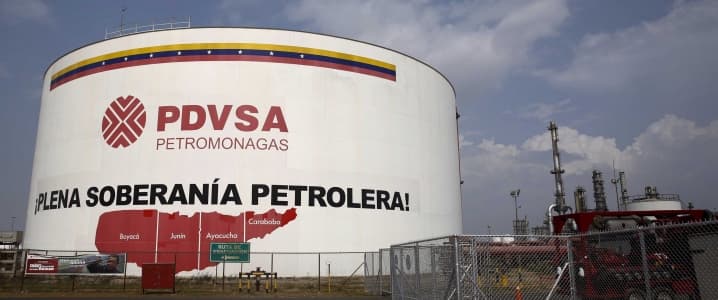
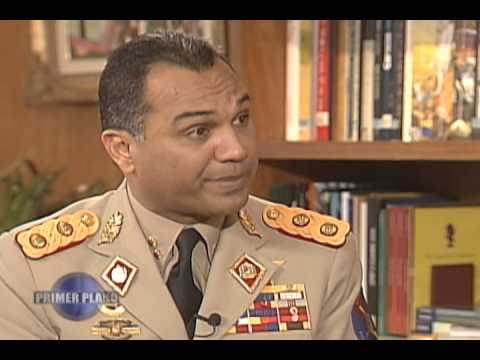
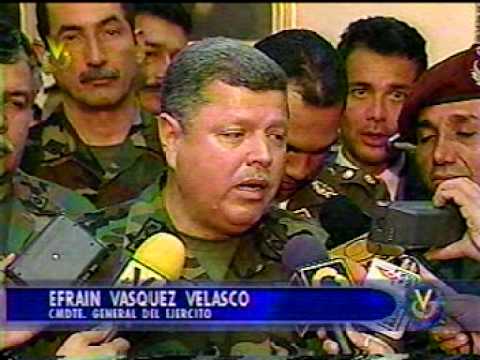
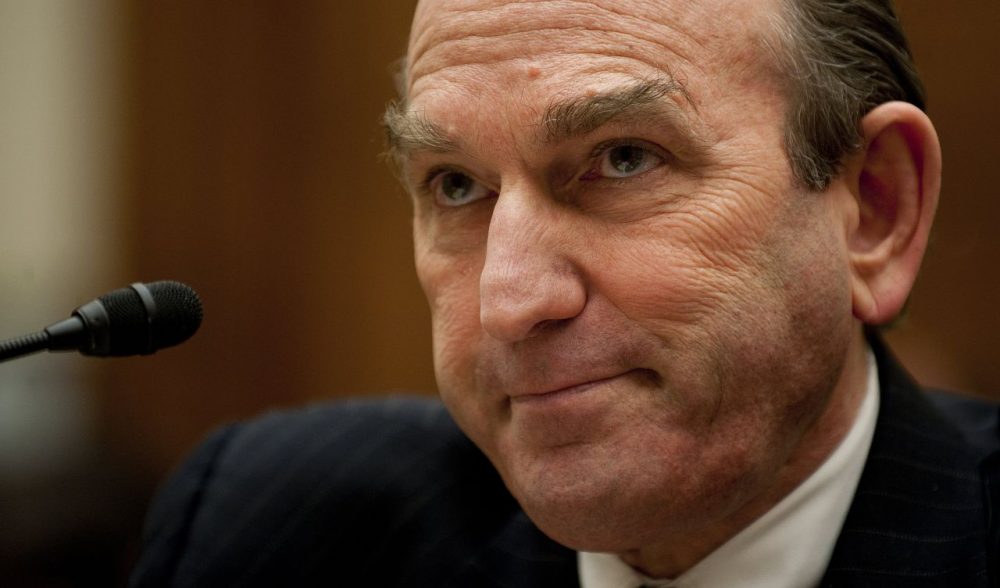
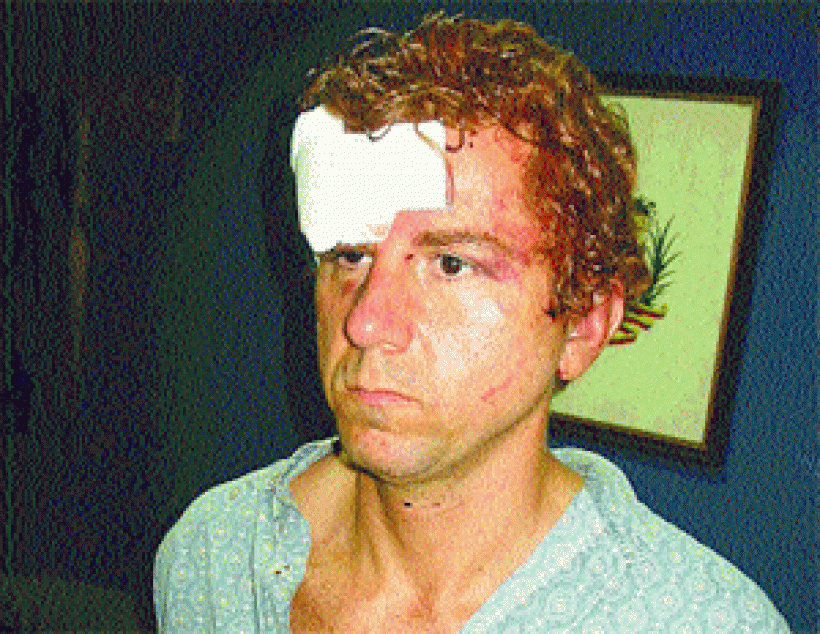
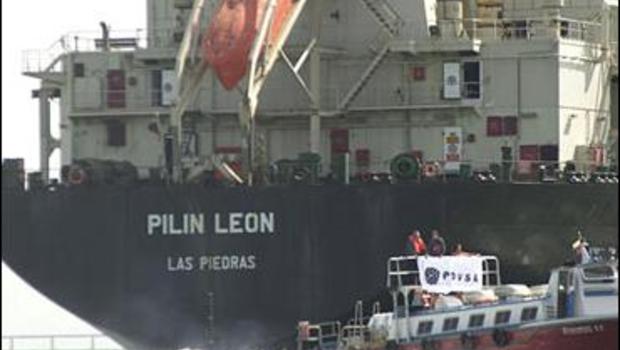


Comments are closed.